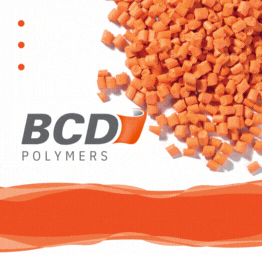Participants from Becker Photonik, the German Aerospace Center (DLR), the Fraunhofer Institute for Mechanics of Materials (IWM), the Heinz Maier-Leibnitz Zentrum (MLZ) at the Technical University of Munich, the Institute of Materials Physics, Hereon, the Ingolstadt University of Applied Sciences and Waygate Industries all attended the event, which featured a wide range of testing methods.
Using a TomoScope L 300 industrial computer tomograph from manufacturer Werth Messtechnik, Steffen Pfau, manager of electrical testing at Arburg and coordinator of the meeting, presented a new method of material and component testing together with Thomas Ullmann as Chairman of the VDI Technical Committee.
Getting to know each other and an interesting discussion
Also on the agenda were the presentation of the HI-ACTS Helmholtz innovation platform by Dr Marc Thiry, the current planning status of and promotional activity for the TUM Expert Forum and the current status of the creation of the Expert Committee website by Dr Ralph Gilles, followed by a discussion of the application of industrial computer tomography in the context of injection moulding machines.
Experience with applied X-ray technology highlighted in the Expert Committee
Arburg uses radiographic X-ray technology for non-destructive component analysis of internal defects, for measuring (metrology), for holistic component evaluation (nominal/actual comparison) and for assembly analysis of multi-part components. The Expert Committee together with the team led by Steffen Pfau, who is also responsible for CT equipment and radiation protection at Arburg, has agreed that the subject of residual stress analysis using neutron radiation will be discussed in further detail. This will enable Arburg to evaluate whether complementary processes to X-ray technology would be of benefit in the future.
Non-destructive evaluation of components
The meeting at Arburg was prompted by a presentation given by Dr Agnes Kloke, Technology Development ARBURG Plastic Freeforming (APF), at the Expert Forum in 2018. Even back then, it was known that the quality of additively manufactured APF components could be analysed using industrial computer tomography. A further driving force behind the knowledge exchange and evaluation was the presentation by Andreas Keck of Technology Development APF. As an expert, he acts as a go-between for Arburg and its subsidiary ARBURGadditive in matters relating to computer tomography and non-destructive component and part analysis.
Sharing and developing expert knowledge
The meeting of experts was also an opportunity for a tour: Jan Klix, team manager of the materials laboratory, took the group on a tour of the Arburg areas of production, and Steffen Pfau showed them around the EMC laboratory, which also houses the computer tomograph.
Expert Committee chairman Thomas Ullmann was very happy with how the event went: "Experience shows that there are many, sometimes very unconventional, non-destructive measuring methods that are widely understood by specialists. But they often know very little about the specific issues that industrial users face in terms of process and product development. With the comprehensive expertise of its members, our Expert Committee can bring these two sides together – as we are doing today at Arburg."



